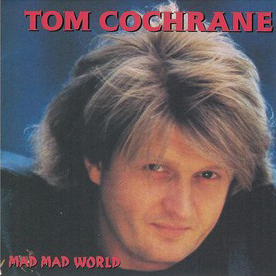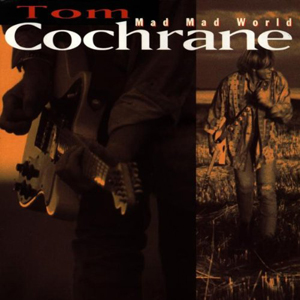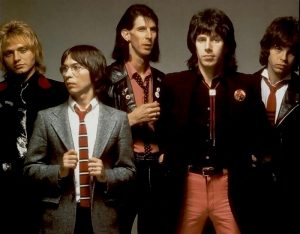
After recording seven Red Rider albums, Tom Cochrane officially became a solo artist in 1991, upon the demise of the band. (He did, however, release a pre-Red Rider LP, so technically he was a solo artist in in 1974.) Actually, that should’ve come as no surprise to anybody, as the first four were released under the name “Red Rider” and albums number five through seven under the “Tom Cochrane & Red Rider” banner. (This followed the long tradition of putting the star’s name in front before eventually disbanding the group – Buddy Holly & The Crickets, Diana Ross & The Supremes, Eric Burdon & The Animals, Bob Marley & The Wailers, et al.)
Red Rider had attained cult status in the States thanks to FM radio and MTV favorites – “White Hot” (1979), “Lunatic Fringe” and “Cowboys in Hong Kong” (both 1981), “Light In The Tunnel” and “Power” (both 1983). But up in the Great White North, the band was a big deal. Maybe not Bruce Springsteen big, but perhaps Bob Seger big. Enough that the name “Tom Cochrane” garnered a decent amount of respect.
Entering a new decade is rarely kind to stars of the previous years, and the transition from the 1980s to the 1990s was no exception. Many of the largest rock bands of the 1980s struggled to maintain career status quo in the 1990s. But Cochrane, playing it smart (or just doing what came naturally to him), abandoned the slick rock sound of Red Rider and went with something that was a little more timeless and not sonically rooted in one particular decade.

His 1991 solo release (1992 in The U.S.), Mad Mad World was much more rootsy-John Mellencamp/Bruce Springsteen type of music than anything Red Rider recorded. Gone was the 1980s guitar sounds and big rock production; instead, there was more acoustic guitar and crisp percussion. And in the tradition of timeless road songs (“On The Road Again,” “Ventura Highway” and “Take Me Home, Country Roads”), the album’s enduring single, “Life Is A Highway” was a hit on both the radio and video airwaves.
So, the album and single were enough to get Tom Cochrane on the map as a solo artist; unfortunately (similar to Roger McGuinn and Back From Rio), that traction and name recognition didn’t carry over to his next release, 1995’s Ragged Ass Road. (At least not here in the States.) Today, Cochrane tours as both a solo artist and as part of a reformed Red Rider.
Vital Stats:
- Artist: Tom Cochrane
- Album: Mad Mad World
- Label: Capitol
- Producer:Tom Cochrane, Joe Hardy
- Released: September 1991 (Canada); February 1992 (America)

 Ric Ocasek
Ric Ocasek Elliot Easton
Elliot Easton Benjamin Orr
Benjamin Orr